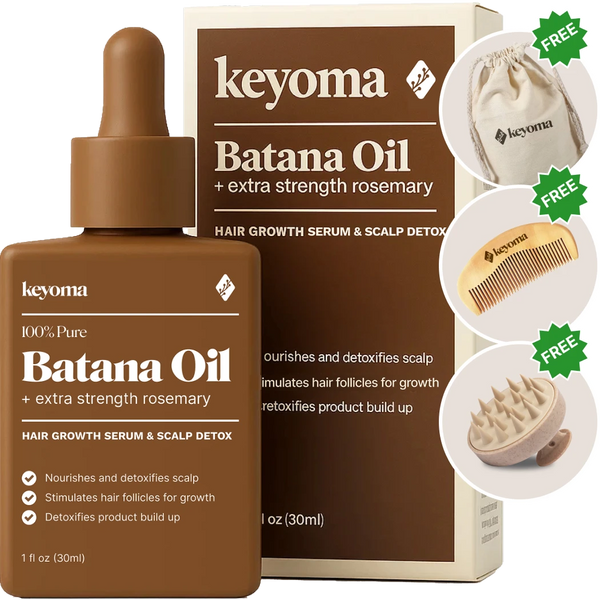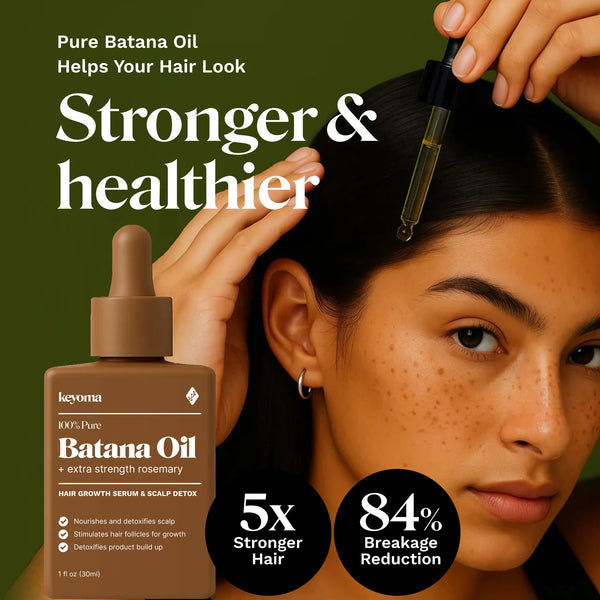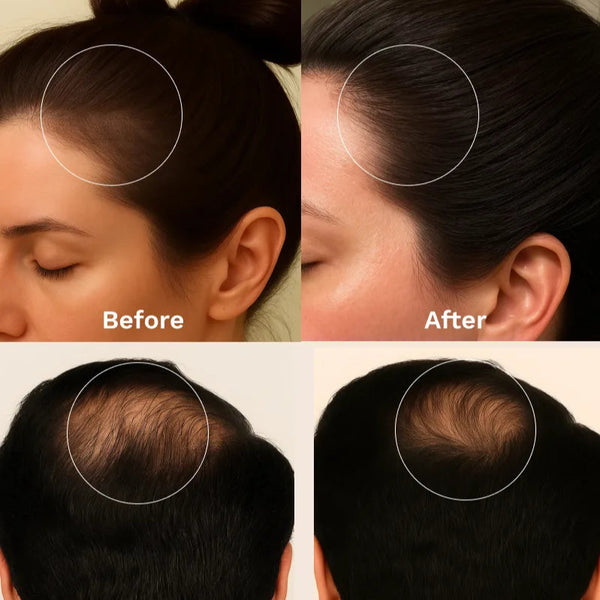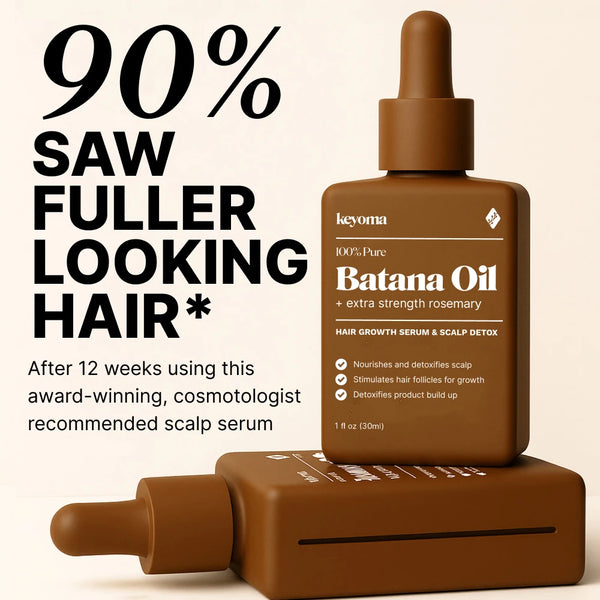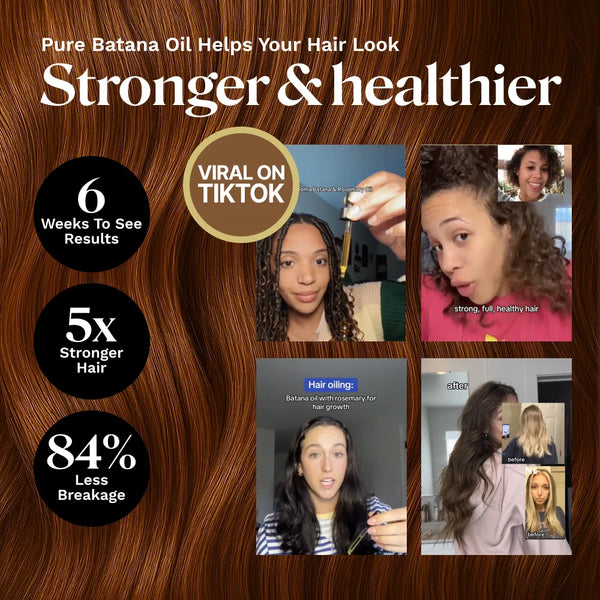In this article
You want shine and softness without the flat, greasy look. If your hair is fine or your scalp gets oily fast, that balance can feel tricky. The good news is you do not need to ditch oils. You only need the right kind of oil, the right amount, and a smarter way to apply it.
In this guide, you will learn what “dry oils” are, how they compare to heavier oils, which lightweight options actually feel clean, and exactly how to use them so your hair keeps lift and movement. Ready to make one or two drops work harder than a whole pump ever did?
Key Takeaways
-
Dry oils spread and absorb quickly, and can give shine without weighing down fine hair.
-
Using one to two drops on damp mid-lengths and ends can preserve lift and movement.
-
Lightweight options include batana, squalane, marula, jojoba, and camelina, while richer oils need micro-dosing on ends.
-
Coconut oil reduces protein loss when used pre-wash, avoid roots on oily scalps.
Dry Oil vs Heavy Oil
“Dry oil” is a simple idea. It is an oil that spreads quickly, absorbs fast, and leaves little residue on the surface. Think satin, not slick. Heavier oils tend to sit longer on top of the hair and can feel richer.
That extra richness is not always a problem. It just depends on your hair type and how you use it. If your strands are fine, your best bet is an oil that disappears cleanly or a tiny dose of a richer oil used only on the ends. That is how you get slip and shine without collapse.
Penetration matters too. A classic hair study found that coconut oil reduced protein loss when used as a pre or post wash treatment, while mineral and sunflower oils did not show the same effect.
That difference comes from how well certain molecules enter the hair fiber. Helpful for protection. Not so helpful if your goal is a weightless finish every day. For fine hair, you can borrow the protection trick as a short pre-wash step and still keep your styling light.
7 Best Lightweight Hair Oils for Fine Hair
Here is the heart of it. You will see a mix of truly light oils and smarter ways to use slightly richer ones. Focus your application on mid-lengths and ends. Keep roots clear unless your scalp is dry. A clean finish starts with a light hand and a plan.

1. Batana Oil
Batana comes from the American oil palm and feels lush. Many people describe it as thick and buttery. That texture makes it a beautiful deep-conditioning finisher for dry or coily hair. If your hair is fine, batana can still work for you when you micro-dose. Try a single drop melted between palms, then tap only the last two inches of your hair.
Another smart play is to blend a tiny amount into a lighter carrier before use. Recent coverage notes the rich feel and the way it can smooth and soften, which is why fine hair benefits from restraint here.
2. Squalane
Squalane is a stable, silky emollient that vanishes quickly. It gives slip without the greasy afterfeel, which is exactly what you want on fine hair. It also has a strong safety profile in cosmetics. Use one to two drops on damp ends, then decide if you need more. Most people do not.
3. Jojoba Oil
Jojoba is not a true triglyceride oil. It is a liquid wax ester that closely resembles your own sebum. That is part of why it feels balanced and not heavy when used sparingly. For fine hair, start with a fingertip amount on the very ends. It helps tame fuzz and adds a soft sheen without yelling “product.”
4. Sunflower Seed Oil
Sunflower seed oil is light and smooth. It tends to remain more on the surface compared to classic penetrators like coconut, which is good news when you want a cleaner finish. Use a drop as a quick polish or mix a small amount into your favorite lightweight styler for extra slip.
5. Argan Oil
Argan is famous for a reason. In lab testing, pretreating hair with argan oil helped protect against oxidative damage. That does not mean you should drench fine hair. A pinhead-sized amount can be enough to reduce frizz and boost shine after a blowout. The aim is protection and glow, not weight.
6. Marula Oil
Marula is often called lightweight and quick to absorb. The result is smoothness and shine that does not feel greasy. If your hair falls flat easily, this is a strong finisher. Rub a drop between your hands, then press it into the ends. If you cannot see it, you probably used the right amount.
7. Camelina Oil
Camelina seed oil is rich in omega 3s and often described as lightweight and non greasy. It leaves a satin slip that suits fine hair when used in tiny doses. Try it on damp ends before air drying for a soft, touchable finish.
How To Use Lightweight Oils
The product is only half the story. Technique decides whether you get soft movement or heavy strands. Here is a simple routine that keeps lift where you want it and shine where you see it.

1. Start With One to Two Drops on Damp Mid-Lengths and Ends
Work with damp hair so the oil spreads evenly and you need less. Emulsify one drop between both palms. Then tap from mid-lengths to ends. Stop and check. If you still see frizz or fuzz, add a second drop. Small amounts keep the finish clean and natural.
2. Avoid the Roots if Your Scalp Is Oily
Fine hair loves volume at the root. Oils near the scalp can flatten that fast. Keep product off the first two inches, then shampoo as often as your scalp needs. If your scalp gets oily quickly, daily or frequent washing can be appropriate. Listen to your scalp, not a rigid schedule.
3. Use as a Finisher or Light Pre-Wash, Not a Heavy Mask
For everyday styling, treat oils like a finisher. If you want the protective benefits of a deeper oil, try a short pre-wash. Massage a small amount through lengths for ten to twenty minutes before shampoo. You get help against protein loss without wearing a heavy film all day.
4. Clarify If Hair Feels Coated
Any oil or film-former can build up, especially if you layer products. When hair looks dull or limp even when clean, use a clarifying shampoo to reset. Keep it occasional, then follow with a basic conditioner on lengths so you do not overdry.
5. Pair With Silicone-Light Stylers for Frizz Control
Silicones can smooth the cuticle and reduce friction during combing, which helps with frizz and flyaways. If your hair is fine, choose lighter amounts or alternate days so you keep lift. You want less drag, not buildup.
6. Patch Test and Adjust Frequency
Even gentle emollients can be irritating for a small group of people. Patch test new oils on skin first. Start slow and adjust how often you use them based on how your scalp and hair respond. There is no single correct frequency. There is only what keeps your hair clean, comfortable, and shiny.
FAQs
How often to use lightweight oils
Use them as needed. If your scalp gets oily quickly, wash more often and keep oils to mid-lengths and ends. If your hair is dry, you can apply a drop daily on the ends and wash less often. Your wash rhythm should match how fast your scalp produces oil and how much product you use.
Can I use oil on an oily scalp or fine hair?
Yes, but placement is everything. Keep oils off the roots and use the smallest amount that gets the job done. A pea-sized amount can be too much for fine hair. One drop often is not. Shampoo when hair feels dirty or limp. That simple habit keeps the finish light.
Do lightweight oils protect hair from damage?
Some do. Argan oil pretreatment has been shown to help protect hair from oxidative damage in lab testing. Coconut oil reduced protein loss in a well known study when used before or after washing. Those are solid reasons to use small amounts in smart ways, especially before heat or as a quick pre-wash.
Should I apply on damp or dry hair?
Both can work. On damp hair, oils spread farther so you can use less. On dry hair, a single drop can smooth frizz and add polish. Try damp for slip and dry for shine. Keep the dose tiny either way, especially if your hair falls flat easily.
Will oils cause buildup on fine hair?
Any film-forming product can build up with daily layering. You will notice that as dullness, limp roots, or a waxy feel. The fix is simple. Clarify now and then, rotate a lightweight oil, and keep amounts small. That keeps your hair soft and glossy without the coated feel.
Choose a Lightweight Oil Routine With Keyoma
You do not need to choose between shine and volume. Pick a truly lightweight oil like squalane, marula, jojoba, camelina, or a tiny drop of sunflower. Keep richer oils like Keyoma Batana oil with Rosemary for finishing touches or short pre-wash steps.
Apply on damp mid-lengths and ends, skip the roots, and clarify when hair starts to feel coated. That is the simple routine that lets fine hair look glossy without going flat. You will feel the difference the first time you stop at one drop. And you will see it when your hair keeps its lift by the end of the day.
Featured Product
100% Pure Batana Oil + Rosemary
↓Best Batana Oil to Buy↓
1 Month
Subscribe & Save
- 30-day supply delivered monthly $35
- 30% off for life $6
- Free haircare essentials kit $33
- Free custom wooden comb $10
- Free scalp massager $15
- Free eco-friendly travel bag $8
- 30-Day Money Back Guarantee
- Free Shipping
- Online portal for easy cancel, skip, or pause.
1 Month One Time Purchase
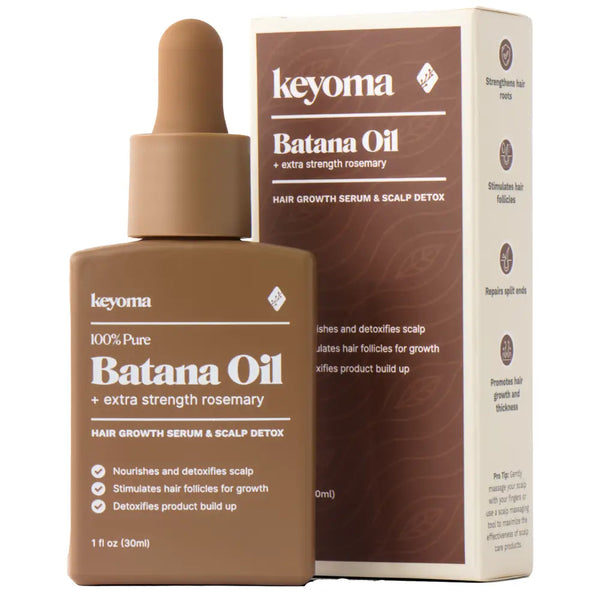
- 30-day supply $50
- 30% off for life $6
- Free haircare essentials kit $33
- Free custom wooden comb $10
- Free scalp massager $15
- Free eco-friendly travel bag $8



